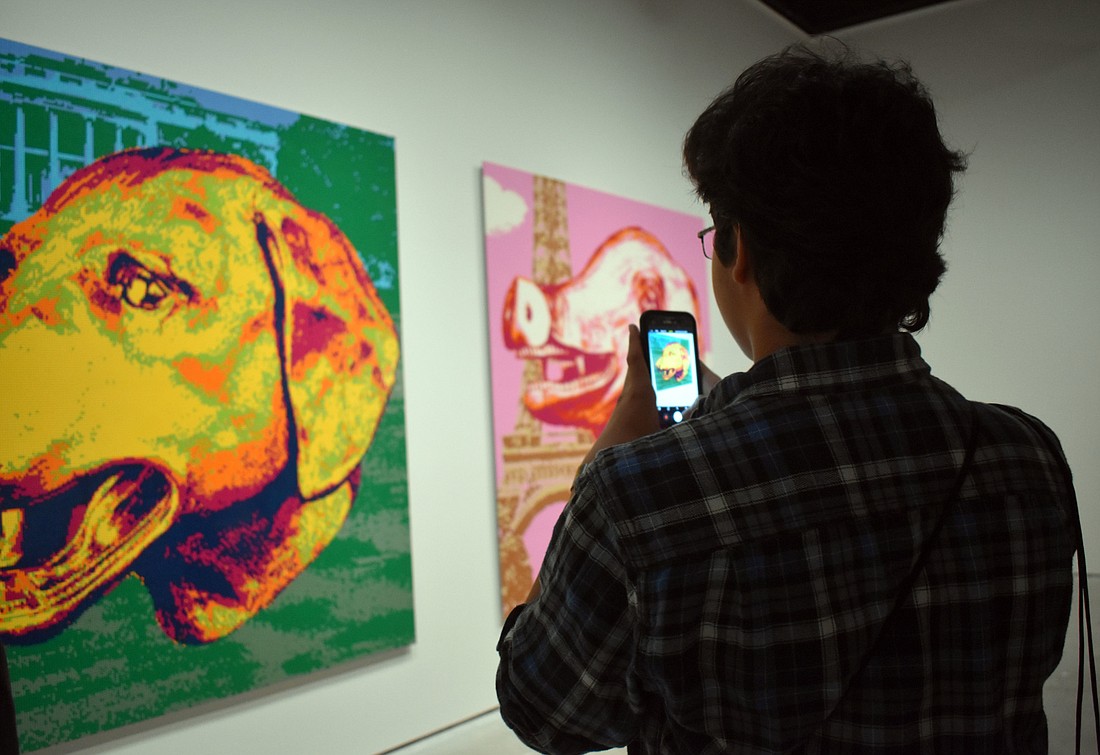- November 23, 2024
-
-
Loading

Loading

Legos, a toy most often used for helping children’s fantasies come to life — or causing a sharp pain to an unsuspecting bare foot — take on a more serious meaning in The John and Mable Ringling Museum of Art’s newest exhibit, “Zodiac (2018) Lego.”
In the exhibit, which is now open to the public, Chinese excessivism artist Ai Weiwei juxtaposes the history of the Chinese zodiac with the contemporary
medium of Legos.
Ai used more than 400,000 Legos to construct 7½-by-7½-foot compositions of each animal in the zodiac year: rat, ox, tiger, rabbit, dragon, snake, horse, ram, monkey, rooster, dog and pig.
The panels are set up in the order of the calendar in a circle around the room, which causes the viewer to think about the eternal cycle of life the zodiac represents.
“Zodiac (2018) Lego” builds on Ai’s internationally acclaimed “Circle of Animals/Zodiac Heads: Bronze and Gold (2010)” sculpture series, which The Ringling hosted in its outdoor garden in 2017 and 2018. Both shows celebrate Ai’s reinterpretation of the bronze animal heads representing the traditional Chinese zodiac that once adorned the famed fountain clock of the Yuanmingyuan, an imperial retreat outside Beijing also known as the Old Summer Palace.
The pieces each weigh around 200 pounds and were transported from Dusseldorf, Germany, in a 150-pound crate. None of the Lego bricks is glued down, so Ringling Executive Director Steven High says the transportation was nerve-wracking — though all 12 panels do come with an extra bag of Lego bricks, just in case.
Each animal is featured with an easily recognizable background, such as the White House, the Eiffel Tower or the Elizabeth Tower, which holds the Big Ben bell. In an earlier series, called “Study of Perspective,” Ai traveled to similar landmarks and shot a photo of just his hand, flipping the bird to the landmarks.
These landmarks represent authority, and High says that a viewer could draw parallels from the behavior of the animal chosen to go in front of each landmark to the country each landmark represents.
Ai was born in 1957, the year of the dragon, and he incorporated a portrait of himself into that panel. As inspiration, he used a popular image of himself in Tiananmen Square, a square in Beijing where thousands were killed or wounded while protesting the government in 1989. The image shows Ai standing with his hands on his hips with profanity across his chest, which High says helps one gain perspective on Ai’s sentiments toward China.
“His work has always been about power and authority” High says. “His point is that, you know, ‘You don’t control us.’ … A lot of his work is actually more voice-driven. There’s social engagement in that.”
In fact, when Ai first approached the Lego company to buy a bulk amount for his installation, he was turned down because the company was afraid of making a political statement. However, after Ai posted about it on his social media and received thousands of responses, the company relented.
The piece is on display in the U.S. for the first time, besides a 2018 commercial debut at Deitch Gallery in Los Angeles.